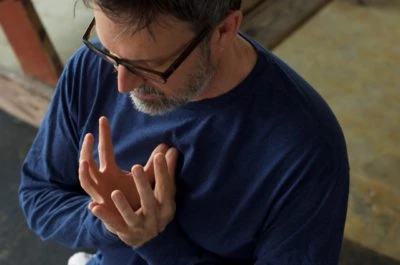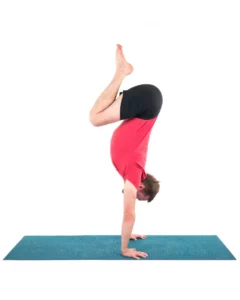Finding Connection: What Yoga Can Offer People with Alzheimer’s Disease

I teach Chair Yoga to seniors. Students of different shapes, sizes, and mobility levels come to class with their canes, walkers, and wheelchairs. Some are blind and others are hard of hearing, but many have a less visible disability—Alzheimer’s disease. I smile, learn their names, and listen to their stories. Presence is my first and most important tool as a yoga teacher.
Aging is a slow path toward disability. Attempting to walk this path with grace is nothing less than an act of extreme bravery. For someone with Alzheimer’s, this path leads to an abyss of unknowing. Imagine someone is randomly editing your life’s story. The loss of context leads to the loss of meaning. Memories lose texture. Experiences lose their weight. The current self recedes and new personalities arise.
This is unsettling and extremely frustrating not only for the individual but also for family members. In a society that privileges youth and autonomy, aging coupled with mental illness strips away dignity. The losses feel cruel. Alzheimer’s ruptures time; it isolates.
I am wary of using “Yoga for …” with anything. This language sounds prescriptive and curative, and let’s be clear: yoga will not cure Alzheimer’s. I wish this were the case, but it’s not. So what does yoga offer someone with Alzheimer’s?
I believe the answer is simple: yoga equals connection. In a world where context is unraveling, finding company within a group and connection within your body is for healing the soul. As a yoga teacher, I want people to experience connection, even if it’s temporary, because the body remembers when the mind cannot.
Grounding and Rhythm in Yoga Practice 
My classes are a community where we explore what’s possible and find humor in seemingly easy tasks that prove a challenge. We begin practice by grounding our feet and aligning our spines. In many cases, the alignment isn’t very precise, but I want students to feel the sense of relief and integration that grounding offers.
We layer in rhythmic movement by gently swaying side-to-side, moving in circles, and rocking forward and back. I return to some form of grounding and rhythm in between almost every sequence. The class is a dance of accessible movements and shapes with a focus on moving across the midline and in two planes at once. My objective is to access the body, calm the nervous system, and stimulate the brain.
Linking breath with movement is powerful, but it can be difficult for students with Alzheimer’s. Knowing this, I rarely lead with the breath. My students struggle with left/right discrimination and moving in two directions at once. Managing these types of movements and coordinating breath at the same time is extremely challenging and often causes frustration.
We explore movement first and layer in the breath after we have connected with the body. A simple change in my cueing order creates the necessary rhythm, connection, and space for the breath to benefit rather than impede my students.
As our time together winds down, we place our hands over our hearts, honoring what the heart represents—a space of love, strength, courage, and compassion. I smile and bow, saying, “Thank you for joining me. I honor you.” Yoga equals connection.
Research supports chair yoga’s positive effect on Alzheimer’s patients-an article by B Grace Bullock P.hD. – Chair Yoga Improves Balance in Alzheimer’s Patients, a new study shows.
Restoring Prana: Key Roles of the Diaphragm in Health and Vitality a course with Robin Rothenberg and YogaUOnline.
Reprinted with permission from Accessible Yoga Blog.
 Carey Sims, RYT 500, E-RYT 200 lives in Charlotte, NC, where he teaches at NoDa Yoga and offers Chair Yoga at various senior living centers in the Charlotte area. He is a student of Adaptive Yoga pioneer Matthew Sanford (Mind Body Solutions, Minnetonka, MN.) Carey’s mission is to use Yoga to help students explore their bodies in an accepting and non-judgmental way.
Carey Sims, RYT 500, E-RYT 200 lives in Charlotte, NC, where he teaches at NoDa Yoga and offers Chair Yoga at various senior living centers in the Charlotte area. He is a student of Adaptive Yoga pioneer Matthew Sanford (Mind Body Solutions, Minnetonka, MN.) Carey’s mission is to use Yoga to help students explore their bodies in an accepting and non-judgmental way.


